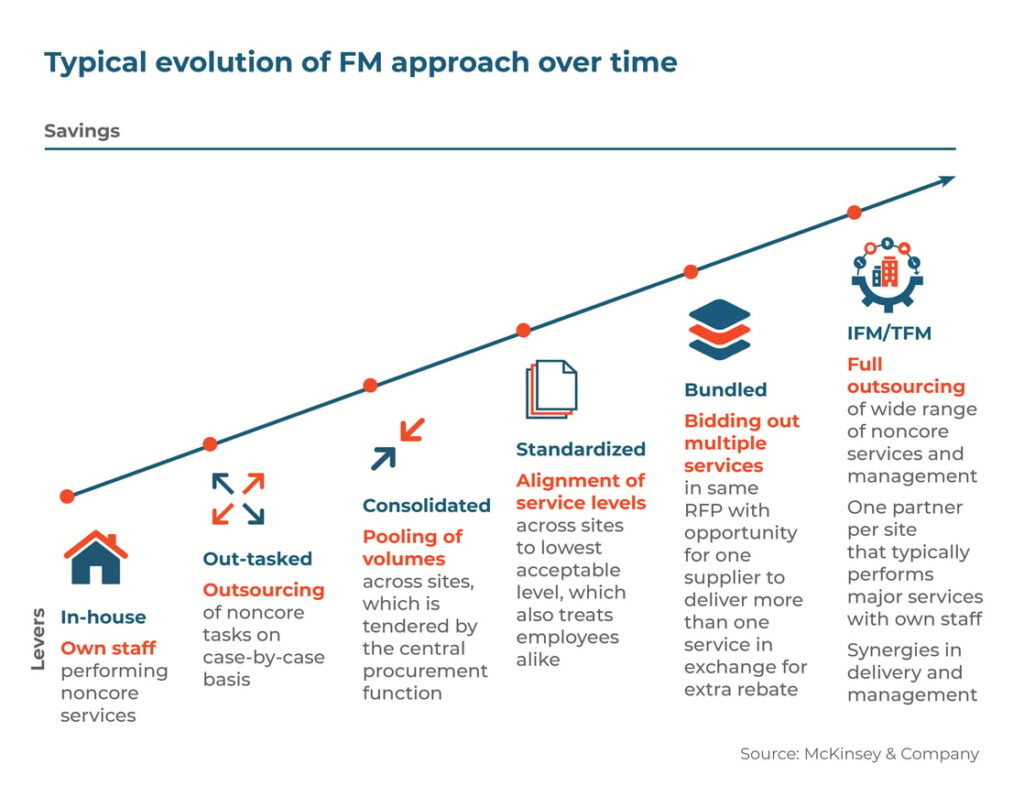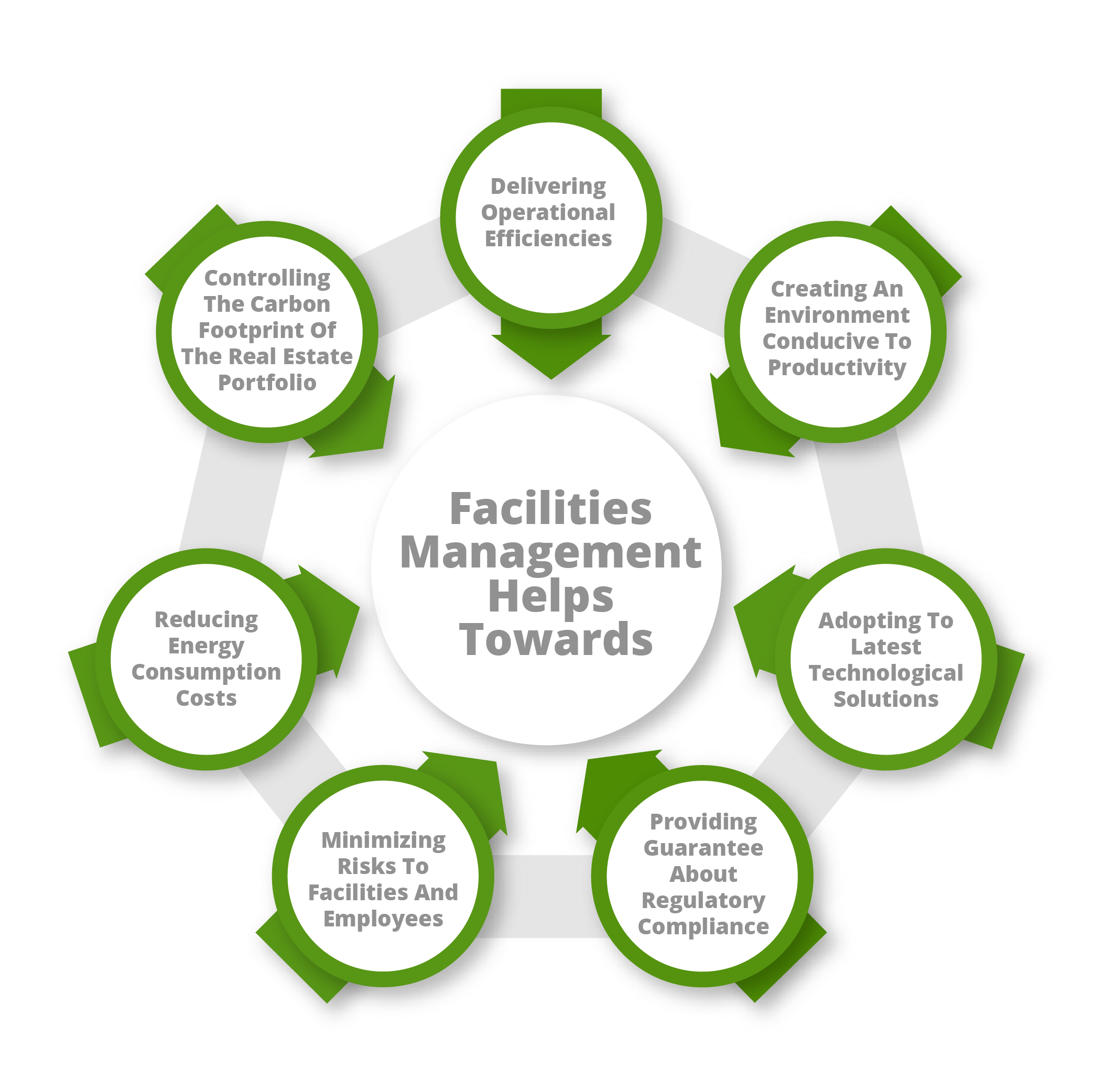How Total Facility Management Can Improve Efficiency and Lower Costs
How Total Facility Management Can Improve Efficiency and Lower Costs
Blog Article
Leading Benefits of Total Facility Management for Streamlined Procedures
Total Facility Management (TFM) stands for a calculated strategy to improving operational efficiency by incorporating numerous services, such as maintenance and safety, under a unified management framework. The question remains: what particular benefits can companies harness from adopting TFM, and just how might these benefits transform their functional landscape?
Boosted Functional Efficiency
Improved functional efficiency is a primary benefit of applying total facility management (TFM) approaches. TFM incorporates a detailed strategy to handling a center's sources, processes, and facilities, ultimately streamlining procedures. By combining different services-- such as maintenance, room, cleansing, and safety management-- TFM improves and minimizes redundancies sychronisation amongst various operational features.
The assimilation of innovation further enhances this performance. Advanced facility management systems give real-time data analytics, enabling facility managers to make informed choices that improve process and resource allocation. Predictive upkeep methods, for example, expect tools failures before they occur, lowering downtime and expanding property lifespan.
In addition, TFM advertises standardized processes across various divisions, making certain uniformity and top quality in solution delivery. This harmony reduces operational disturbances and fosters a more collective workplace. Because of this, workers can concentrate on their core responsibilities, driving efficiency and boosting total efficiency.

Cost Reduction and Savings
Applying total facility management (TFM) not just boosts operational efficiency yet likewise significantly contributes to set you back reduction and savings. By settling various services under a single management framework, companies can remove redundancies and improve procedures, consequently minimizing functional costs. TFM allows much better purchase approaches, permitting companies to work out bulk getting arrangements with vendors and provider, bring about reduced prices.
Additionally, TFM stresses preventative maintenance, which lessens unforeseen break downs and prolongs the life expectancy of critical tools. This positive method not only reduces fixing costs however also enhances the dependability of facilitiess, guaranteeing undisturbed operations. In addition, power performance initiatives, typically a key emphasis of TFM, result in considerable cost savings on energy expenses, as facilitiess are optimized for reduced energy consumption.
Improved Resource Management
Reliable resource management is a cornerstone of total facility management (TFM), making it possible for companies to optimize the use of their assets and workforce. By applying TFM approaches, companies can comprehensively examine their resource appropriation, ensuring that every asset is used efficiently and properly. This all natural method enables the identification of underperforming sources and the possibility for reallocation or improvement.
Furthermore, TFM helps with the integration of innovation for real-time tracking of sources, which aids in anticipating upkeep requirements and preventing costly downtime. By leveraging information analytics, organizations can make enlightened choices concerning resource deployment, ultimately improving productivity and minimizing waste.
Moreover, TFM advertises a culture of continuous renovation, encouraging groups to regularly assess and refine their resource management techniques. Total Facility Management. This positive position not only minimizes functional interruptions but likewise cultivates development, as workers are encouraged to recommend improvements based upon their direct experiences with resource use
Streamlined Interaction Networks
In total facility management, streamlined interaction networks play an important function in fostering cooperation and efficiency across groups. Efficient communication look what i found makes certain that all stakeholders, including facility supervisors, maintenance team, and service suppliers, are straightened with operational needs and organizational find more info goals. By establishing clear lines of interaction, groups can promptly deal with concerns, share updates, and carry out options, therefore decreasing downtime and enhancing performance.
With centralized interaction systems, details is easily accessible, enabling real-time updates on upkeep demands, source allowance, and project timelines. This transparency not only decreases misconceptions but additionally equips employees to make informed choices promptly. Moreover, structured interaction helps with far better control during emergency situations, making sure that all workers are informed and can respond promptly.

Increased Emphasis on Core Activities
A vital advantage of total facility management is the increased concentrate on core activities, allowing companies to concentrate on their main service objectives - Total Facility Management. By outsourcing non-core functions such as maintenance, cleansing, and safety, firms can redirect their resources and power in the direction of strategic initiatives that straight add to their affordable advantage and growth
Total facility management integrates various operational jobs under a solitary umbrella, fostering efficiency and minimizing redundancy. This consolidation not only simplifies processes but likewise improves liability, ensuring that every facet of the facility runs harmoniously without diverting interest from what genuinely matters-- core organization features.
Moreover, this technique enables workers to devote their time and initiatives to jobs that drive advancement and enhance customer contentment, rather than obtaining bogged down by operational obstacles. With a trusted facility management companion dealing with day-to-day operations, companies can accomplish better dexterity, respond promptly to market changes, and maintain a sharper emphasis on their goal.
Inevitably, raised concentrate on core activities causes boosted general efficiency, allowing companies to strengthen their market setting and meet their strategic goals better. - Total Facility Management
Verdict
In conclusion, Total Facility imp source Management dramatically enhances operational performance by combining important solutions and leveraging data analytics for notified decision-making. Expense reductions and improved resource management add to overall financial savings, while streamlined communication channels foster partnership amongst stakeholders.
Total Facility Management (TFM) represents a tactical method to improving operational efficiency by integrating various services, such as upkeep and safety, under a unified management structure.Enhanced operational efficiency is a key benefit of carrying out total facility management (TFM) approaches. Advanced facility management systems give real-time information analytics, making it possible for facility managers to make enlightened choices that boost operations and source appropriation.Applying total facility management (TFM) not just improves functional performance however also significantly adds to set you back decrease and cost savings.Effective source management is a cornerstone of total facility management (TFM), enabling organizations to optimize the usage of their possessions and workforce.
Report this page